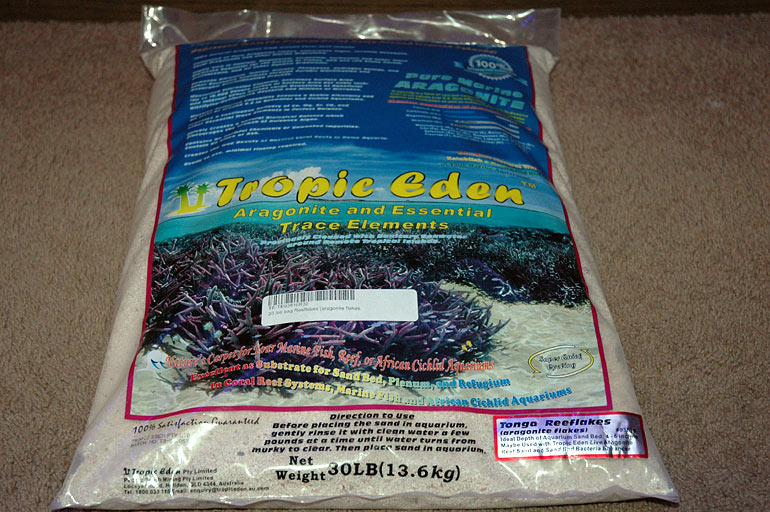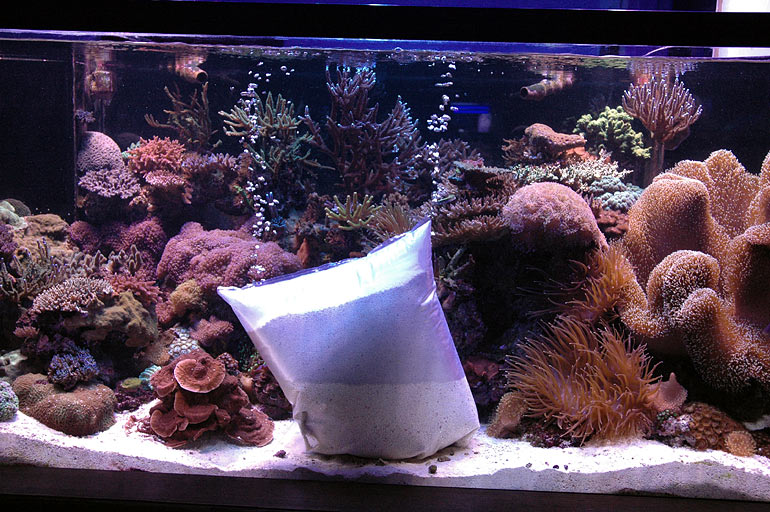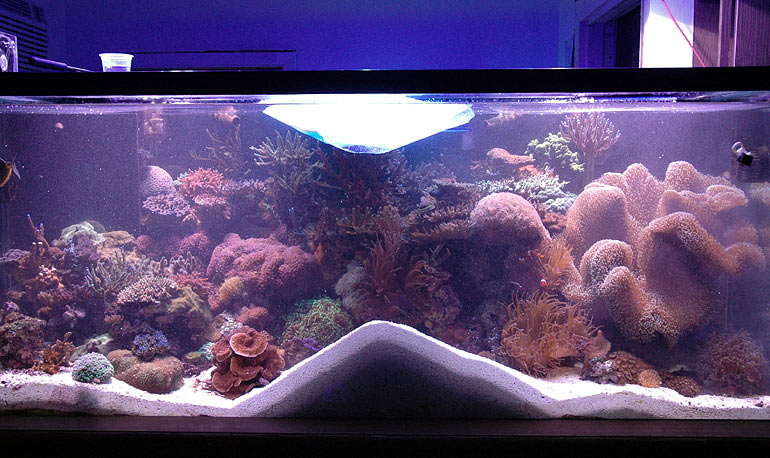This is the bag, wiped down with a damp towel to remove any pollutants.

Next I had to move some corals out of the way. I turned off the return pump as well as the Vortech pumps, but two were still running on battery backup anyway.

Next, I cut off the top of the bag and lowered it into the tank, open-side downwards. Bubbles are rising from the top corners of the bag.

The empty bag is floating on the surface, and all the sand is now on the substrate.

Next I spread it out, moving some corals as needed to get that accomplished. The water didn't cloud much at all. Here it is after 5 minutes.

After 15 minutes
After 45 minutes
After 70 minutes
Done. It looks nicer, and the flow will level it out more.
And this is what the tank looked like the next day.
This is an easy DIY project that you don't have to fear. Using sand from other locations like Home Depot won't yield the same results, which is why store-bought aquarium sand is the best option. Typically one might only need one ore two bags of sand, so saving money might not outweigh the outcome in this particular case. Rather than continually rinsing out 'Pavestone' or 'Southdown' sand, this project is going to cost a little more - but it is well worth it.




 Menu
Menu






Reef Addicts Message